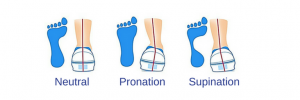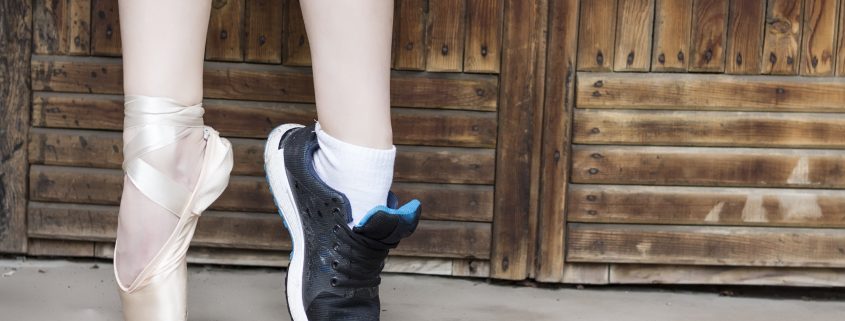Commercial Sales of Trainers – the issues
My previous blog about sports shoes covered some of the things we need to consider before buying footwear for the various different sports we participate in. On doing this research, I have come across some really alarming trends online or some “quick fit guides” to recreational running and exercise trainers. I want to write this blog to discuss some of these issues and try to stop you from falling into some of these online traps.
When you search for trainers online, whether it be on websites from large sports brands to daily health blogs, they always base any shoe prescription on putting you into three different categories. Your feet are either:
- Flat/Pronated feet
- Normal/Neutral feet
- High/Suppinated feet

This basic model classification was first used in 1947 and has since been re-used by magazines, websites and sports shops to help sell you running shoes. This model makes many assumptions about you and your body. These assumptions are:
- Pronation of the foot is predisposing to future risk of injury
- To function perfectly our foot should be a Neutral/Normal foot
- Marketing claims by sports companies about their shoes are always achieved
- You can simply diagnose yourself by doing a “wet foot test”
So lets start with the issues around each point. First of all, the assumption in point one is completely inaccurate. Several scientific studies* have found that there is no association between foot type and risk of injury. A study actually found that pronated feet can PROTECT you from injury**. So what this shows is that you can’t just assume because you have a type of foot, that you are going to have an injury and that it needs correcting. This assumption does not take into account technique, style, muscle tightness, general fitness level and conditioning of each person. To make a choice of shoe based on foot shape is not right.
Point two, what exactly is normal? Health care professionals always like to make sure you realise every treatment you receive is different because the reaction of a treatment is subjective you. No one on this planet can tell you that the way you move is wrong. I have met 95 year olds with “flat feet” who are fitter and have had less injuries than a 25 year old with “neutral” foot type. If you look at the averages of arch heights across the spectrum, normal is actually slightly pronated/flat. We spend our lives accepting differences in human beings, but when it comes to running shoes we accept such a rigid simplistic model.
Point three, can we really trust every claim made by running shoe companies and brands? We have to remember that they are trying to SELL A PRODUCT. That’s right, they are trying to make money from selling you an item. This is the normal sales market and part of everyday life. By making claims about their trainers with very little supporting evidence, they are able to convince you that their trainer is the one for you. As a paying customer, you shouldn’t just look at fancy claims made to sell you the product. What you should do is be empowered with the knowledge about your own body to lead yourself to the style of trainer that is right for you.
The last point, the “wet foot test”. Now, when this was mentioned in 1947, it was created by the US army to categorise their soldiers. This has now been adopted by many websites as the way to diagnose your feet to then match against the styles available. In Podiatry, we spend many years studying, analysing and measuring static and dynamic foot structure and leg movements. The wet foot test simplifies all of our study and simply puts you in a group, that’s if you do the test right of course! It doesn’t take in to account any additional information about your feet, legs or back. The wet foot test is not predictive of dynamic function and is completely and utterly useless.
At FootPro Podiatry I can help accurately assess your gait and biomechanics and help guide you to the right styles and types of running trainers. Just remember though, what you find comfortable may be different to someone else and if something works for you, don’t change it just because you think it looks better or helped your friend be more comfortable. The right shoes, the right orthotics, along with the right stretching and strengthening programme – may hold the key to your comfort and improved performance.
References.
*Franettovich M, Chapman AR, Blanch P et al. Altered neuromuscular control in individual with exercise related leg pain. Medicine and Sport Science and exercise. 42 :546, 2010
Barrett JR, Tanji JL, Drake C et al. Injuries in runners, a prospective study in alignment. Clinical Journal of Sport Medicine. 8: 187, 1998.
**Carvan D, Jones B, Robinson J. Foot Morphologic Characteristics and risks of exercise related injury. Archives of family medicine 2: 773. 1993.
Ian Griffiths, Sports Podiatry. Choosing Running Shoes: evidence behind recommendations. www.sportspodiatry.co.uk




Leave a Reply
Want to join the discussion?Feel free to contribute!